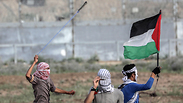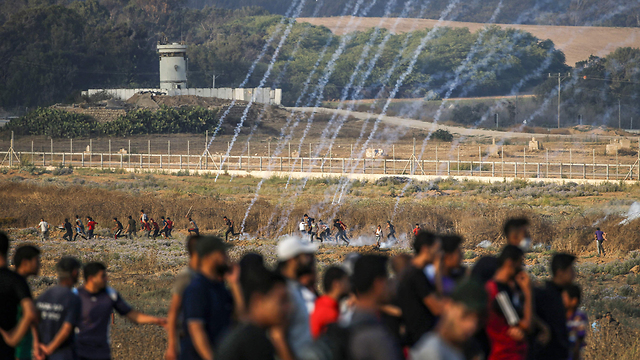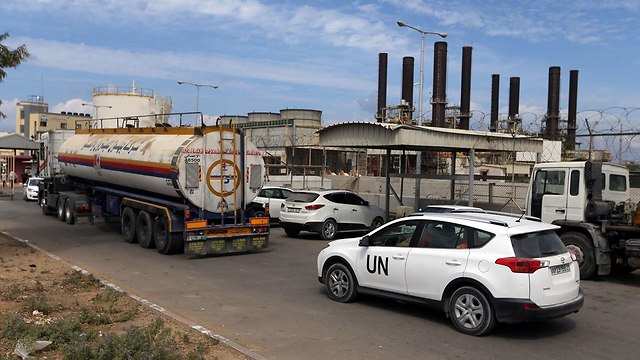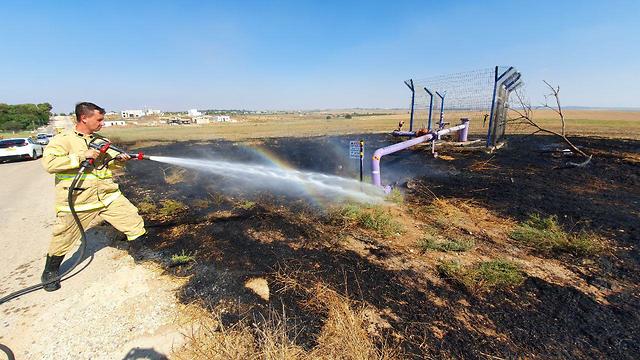
Behind the scenes of the ceasefire arrangement between Israel and Hamas
Analysis: Over the weekend the two sides were once again on the verge of another violent cross-border flare-up, but a last-ditch effort by the Egyptians put the Jewish state and the terror group on course for finally implementing the terms of a long-term ceasefire arrangement
In the hours following the announcement, the two sides were involved in intensive indirect negotiations mediated by Egyptian intelligence officials and UN envoy to the Middle East Nikolay Mladenov’s team. A breakthrough in negotiations was apparently achieved just hours before Israel was supposed to strike in the Hamas-controlled enclave.
Israel apparently gave the terror group an ultimatum to stop all border violence, including incendiary balloons, within 24 hours or face the consequences. Had the negotiations not been successful, we would’ve likely found ourselves in the midst of a new round of cross-border fighting between the two sides over the weekend.
The understandings that were reached are not anything new, but rather another attempt at implementing the agreements between Israel and Hamas which have already been agreed upon.
Nevertheless, the latest understandings weren’t reached with an overwhelming consensus, with the Hamas leadership split on whether the terror group should indeed stop the violence or continue until Israel surrenders to the demands of the Gaza leadership.
Surprisingly, Hamas leader in Gaza - Yahya Sinwar - was the sensible element during the indirect talks, trying to point out the benefits of having calm and stability in Gaza. The one opposing Sinwar’s position was a high-ranking Hamas official, Rawhi Mushtaha, who claimed that Israel was stalling on implementing the understandings which had already been agreed upon years ago on purpose.
Mushtaha demanded the terror group continues the violent resistance even at the expense of another flare-up between the two sides. He apparently claimed it to be necessary in order to prove to not only Israel but to the third-party mediators as well that Hamas was not prepared to be misled by Israeli government any longer.
The belief of those in Hamas who assumed Israel was purposely stalling on fulfilling its part in the agreements was based on three major factors.
Firstly, Hamas was irritated by the fact that Israel wasn’t promoting the agreed upon plans to build an industrial zone near the Karni Crossing in the north-eastern end of the Strip that would provide employment to thousands of Gaza residents. During Thursday’s negotiations, the mediators made it clear to the terror group the plans were stalling due to Qatar not following through with its promises to fund the industrial zone and as soon as the money is available the construction will go ahead.
The second factor is the construction of a power line from Israel to the Gaza Strip, which is also meant to be funded by Qatar. Line 161 was agreed upon back in 2014 but the project was suspended until funding could be found. Over the recent weeks, the mediators brokering the ceasefire deal between the two sides, have misled the Hamas officials into believing the project could be completed within six months, when in reality a project of this magnitude could take up to three years to finalize.
The final factor is Hamas’ demands to increase exports from Gaza and their belief that Israel was trying to sabotage the move. On Thursday it was apparently explained to the terror group’s officials that two previous attempts to export aluminum and toys from the Strip proved to be unsuccessful since there was no demand for the products either in the West Bank or on international markets.
According to the latest assessment, if the calm on the Israel-Gaza border is maintained in the near future, the potential long-term ceasefire arrangement will advance further and will include a series of additional large-scale projects in the coastal enclave.
Israel, however, is not prepared to separate the issue of Israeli POWs and MIAs held in Gaza, which might complicate the arrangement in the latter stages since Hamas continues to insist the matter requires a completely separate agreement.













